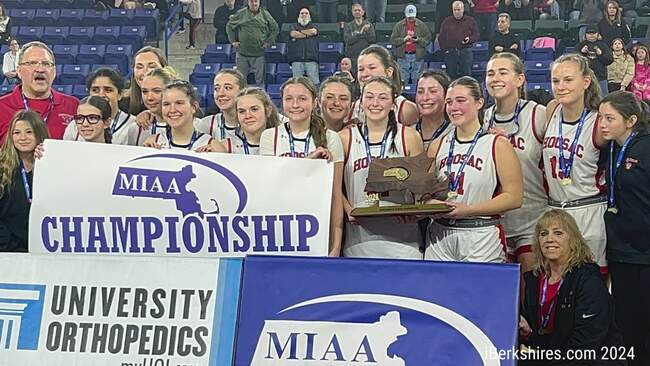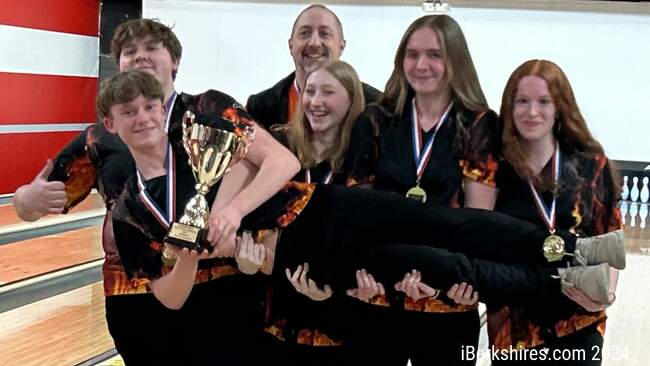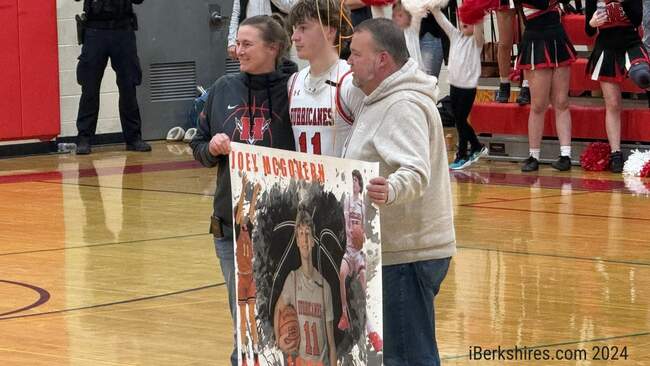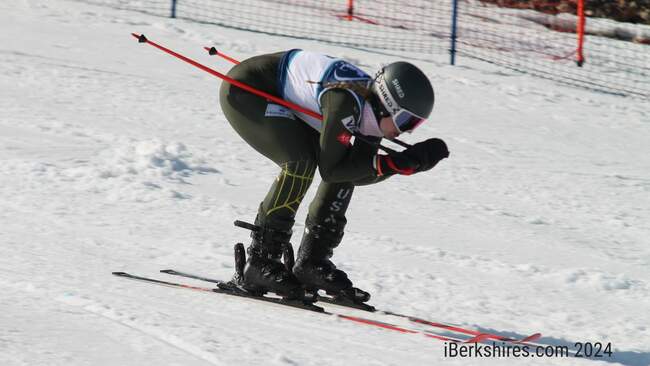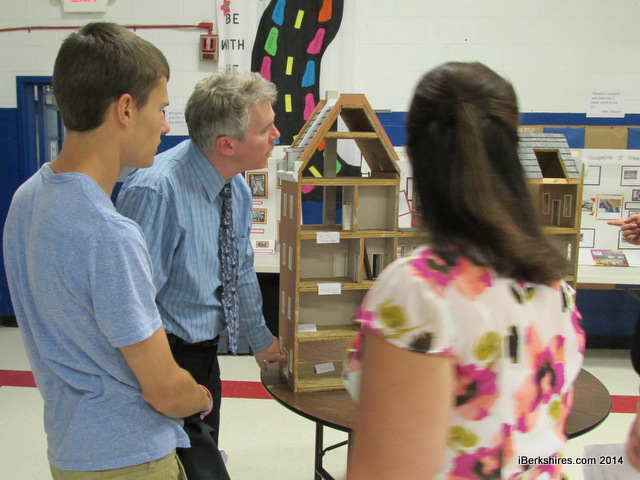
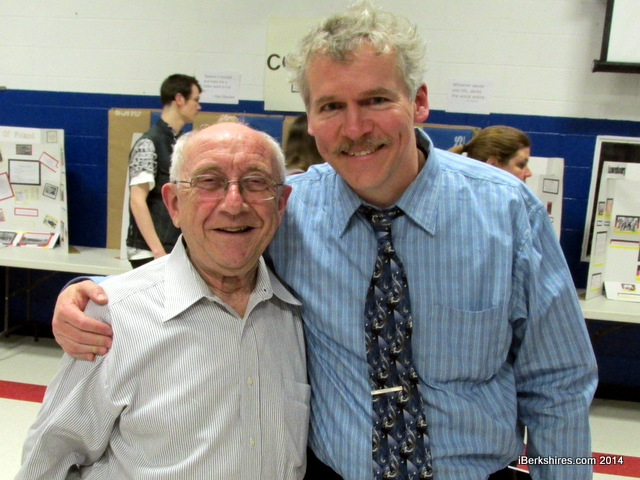
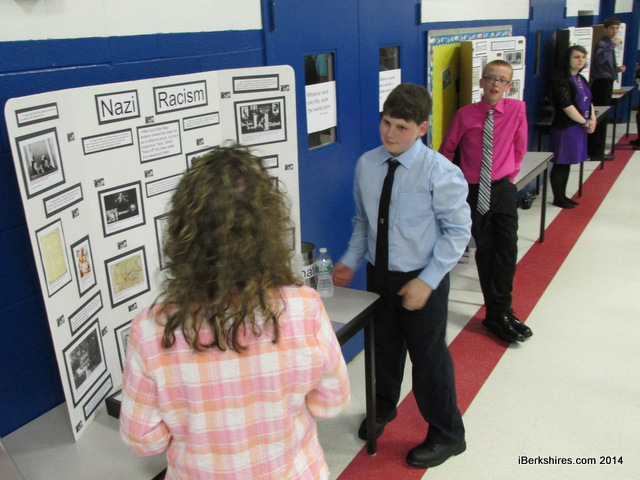
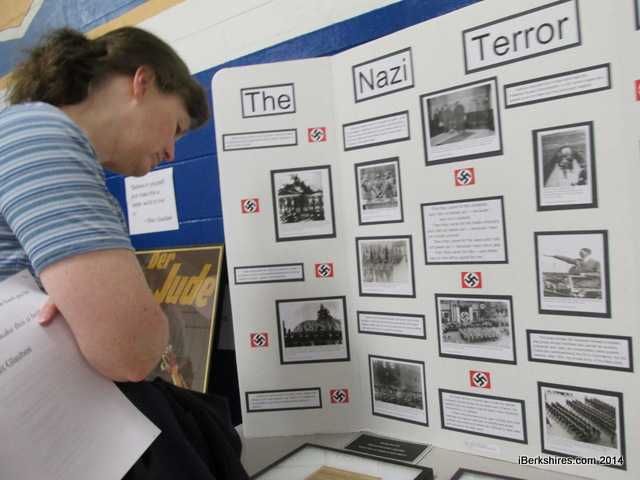
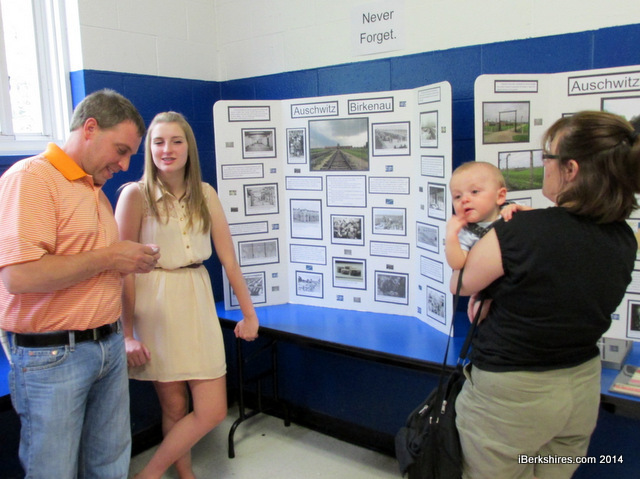
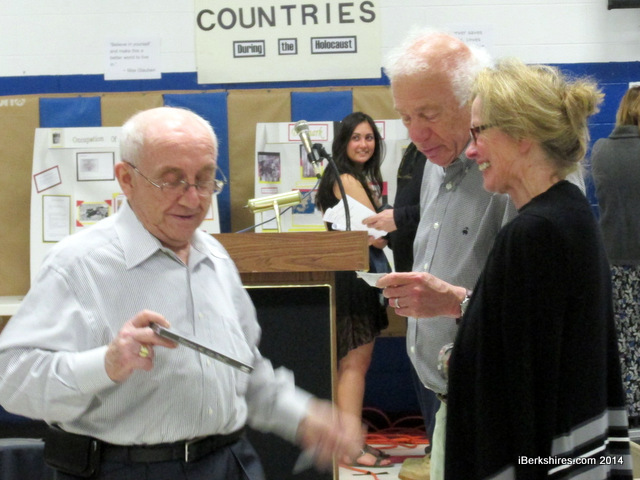
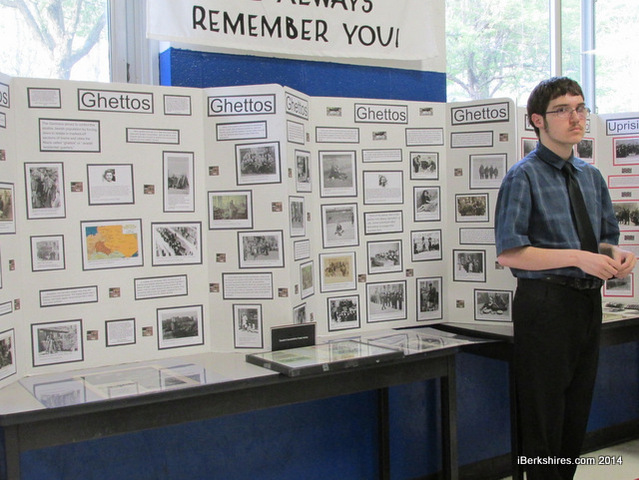
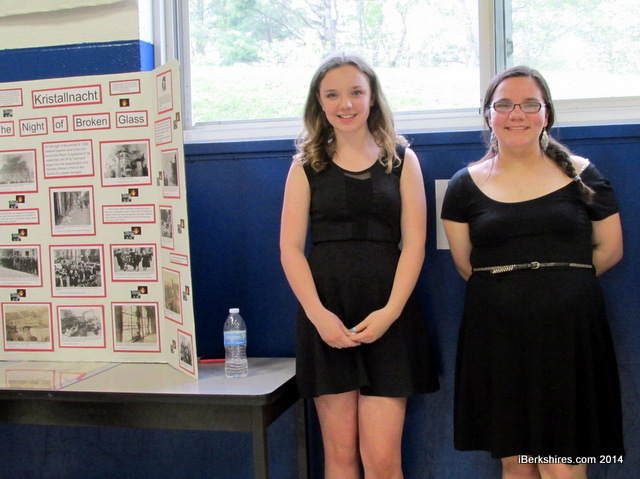
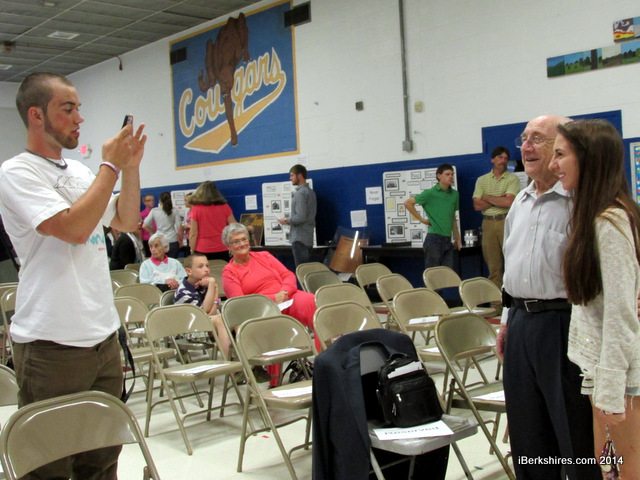
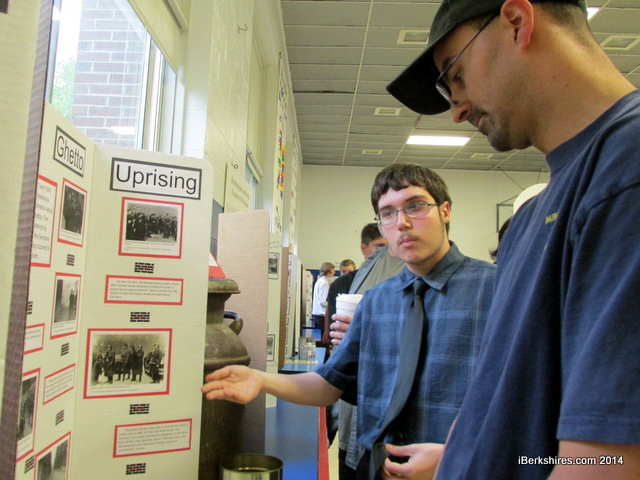
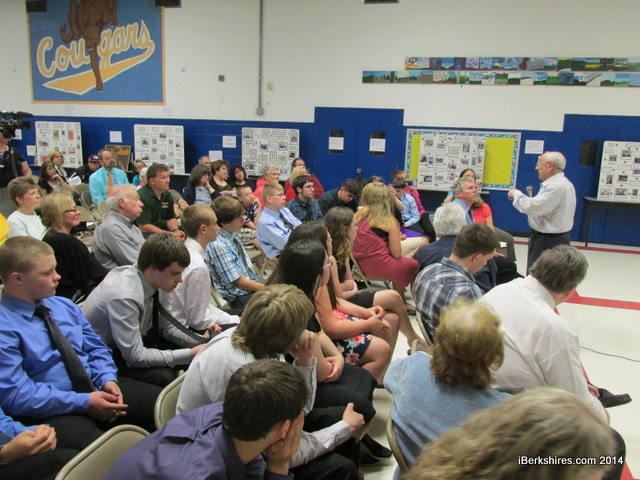
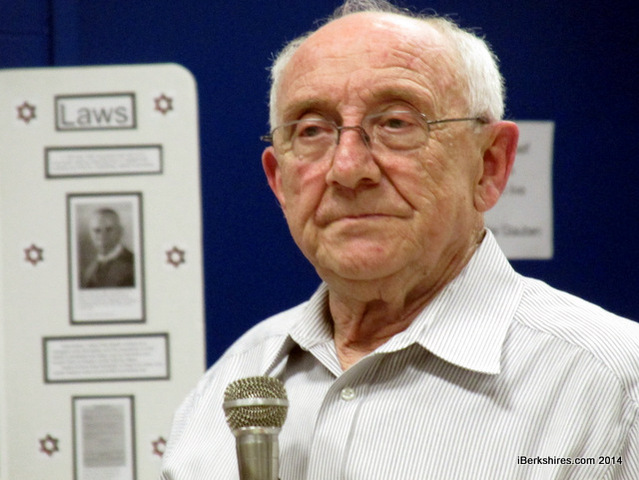
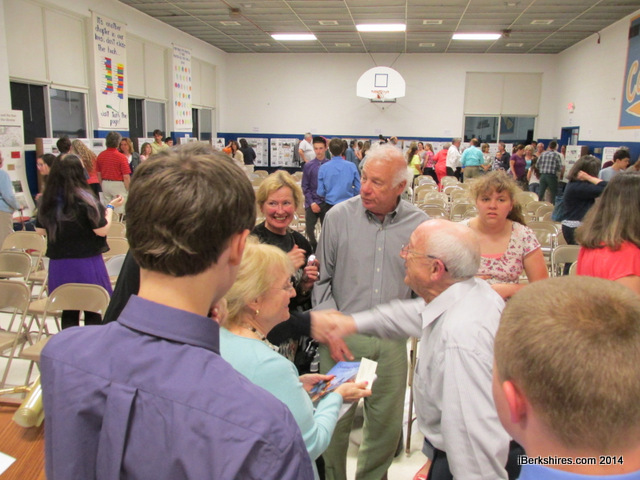
Holocaust Survivor Calls on Clarksburg Students to Be 'Upstanders'
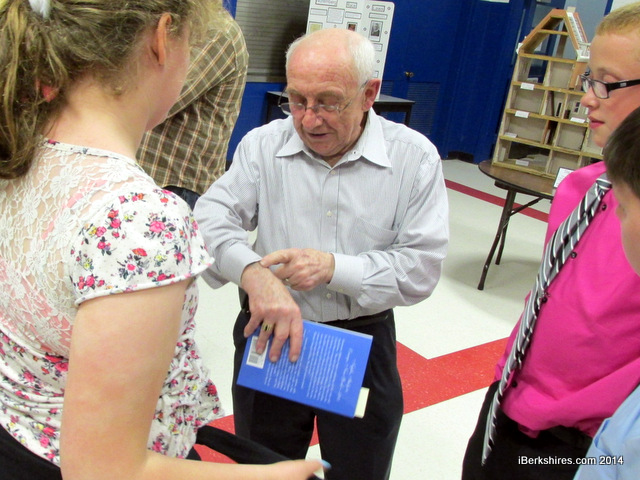 Max Glauben shows students the 'KL' for konzentrationslager (concentration camp) that was harshly tattooed on his wrist as a child. Max Glauben shows students the 'KL' for konzentrationslager (concentration camp) that was harshly tattooed on his wrist as a child. |
CLARKSBURG, Mass. — Max Glauben was 10 when his family was locked into the Warsaw Ghetto, 15 when he was liberated by the Third Army, and barely 17 when he emigrated to the United States as a war orphan.
He survived five concentration camps but lost his parents, younger brother and many relatives in the Holocaust.
The 86-year-old Glauben has told of his experiences to schoolchildren around Texas and other parts of the country, and will participate for the ninth year in the International March of the Living, which brings Holocaust survivors and students together to visit the death camp sites in Poland.
His mission is to raise awareness of the destructive forces of hate and bigotry and the horror that is genocide.
But he found that the Clarksburg School community didn't need a reminder.
"This is like singing to the choir," Glauben said to the annual gathering that culminates the eighth grade's Holocaust studies program. "This is what really was a labor of love."
The school is in its ninth year of offering a semesterlong course in the Holocaust and genocide. On Wednesday night, the efforts of some three months of research was presented by the students in Michael Little's class along the gymnasium walls.
The students had done all the work themselves, said Little, the first time in the nine years of the course that he hadn't had call on the younger pupils to lend a hand.
"I think they all have very bright futures ahead of them," he said.
Presentations ranging from the prewar Jewish community life to the rise of the Nazis to the uprising in the Warsaw Ghetto to the loss of millions of children, along with artifacts from World War II collector Darrell K. English's New England Holocaust Institute, documented a history of terror under the theme "Never Forget."
"I knew a little before about," said Caidy Denning, who did her presentation on the ghettos, because she had helped with the previous class. "As we dug deeper, you learn more. It's so sad so many died.
"So many Jews were killed. And not just Jews, but other people, too."
Maisy Ingalls did her research on Kristalnacht, or "Night of Broken Glass," when stormtroopers and civilians trashed synagogues and Jewish businesses throughout Germany and Austria.
"Thirty thousand people were kidnapped on this night," she said.
The school brings in speakers to give voice to what the children have been studying. They've included a number of Holocaust survivors, including Glauben, who is a featured speaker for the Dallas Holocaust Museum. He also showed his video "Plagues of the Soul," in which he talks about his experience and the Holocaust is compared to other genocides.
"We as the Holocaust survivors feel like we should be talking about it," said Glauben, because artifacts can't talk and without witnesses, "it's like a play without scenery."
Glauben remembers the walls going up around his home in Warsaw, where his family was in the newspaper business.
Nearly a half-million people were crammed into a little over one square mile; those who could scraped by through smuggling goods in and out, those who couldn't died of starvation and disease. Nearly half were deported to death camps; in 1943, the German army entered the ghetto to remove whoever was left but encountered strong resistance.
But the German soldiers "were well armed and well trained," said Matt Lessard, who did his presentation on the Warsaw Ghetto Uprising, and was able to overcome the Jewish Fighting Organization, or ZOB.
"It was a very difficult project," he said but one that he'd pushed to complete.
Glauben's family had hidden in bomb shelters in basements with hundreds of others as soldiers, he said, used "napalm
flame throwers for the first time on civilians." They were discovered amid the ghetto destruction and along with 500 others were herded into three boxcars for a five-day trip, which should have taken two hours, to Majdanek death camp.
"You didn't know if the person with their eyes closed was awake, asleep or dead," Glauben said of the crushing conditions. "They wanted to keep us in the boxcars to die."
He and his father were separated from his mother and little brother; it would be the last time he saw them. He was put to work as a pattern maker for aircraft, such as the Messerschmidt, in a slave labor camp. Glauben would learn years later that he had been recorded as being two years older than he was, a fact that probably saved his life.
His father, however, fell victim when several others in their group escaped. His father was taken and presumably executed as an example to others.
Glauben was moved to several other camps; after a seven-day death march, his group left in a wooded area and the soldiers threatened them with machine gun fire if they tried to escape.
"We'll be back to get you," they said, but it would be the Third Army that would liberate him on April 23, 1945. Glauben went with the 179th Signal Corps and became a "mess sergeant" in Nuremberg.
After emigrating to the United States, he joined the Army and later the Reserves, and was stationed in Texas at Fort Hood. He met his wife there and settled in Dallas, where they raised their family.
Glauben ponders what would have become of the 11 million others who died in the camps, including an estimated 6 million Jews.
"Consider the 11 million who perished. They were completely wiped out," he said. "No one to mourn or remember them.
"Do we even see who and what these people were? ... How many could have been Einsteins or Salks? Maybe the could have cured us, given us better music, better writing ... ."
Glauben has made a point on calling for people to be "upstanders, not bystanders" in the face of injustice and evil.
"It's up to teachers like 'Mr. Big' here to stress the fact that I brought up tonight that these were individuals, who were wiped off this Earth without any reminders of who they were but also what we as a population is missing. ...
"If you listen to a witness, you become a witness," he said.
Little said it was people like Glauben, English, Rabbi Robert Sternberg, who was unable to attend, and Robert and Elaine Baum of Stockbridge, who help subsidize the class trip to the U.S. Holocaust Museum every year, who keep the course going.
And the community that attends faithfully each year.
"This is not fun stuff. ... It is difficult subject matter," said Little. "When I look out and see a full house, it inspires me to continue."
Tags: Clarksburg School, Holocaust, school event, school project,

